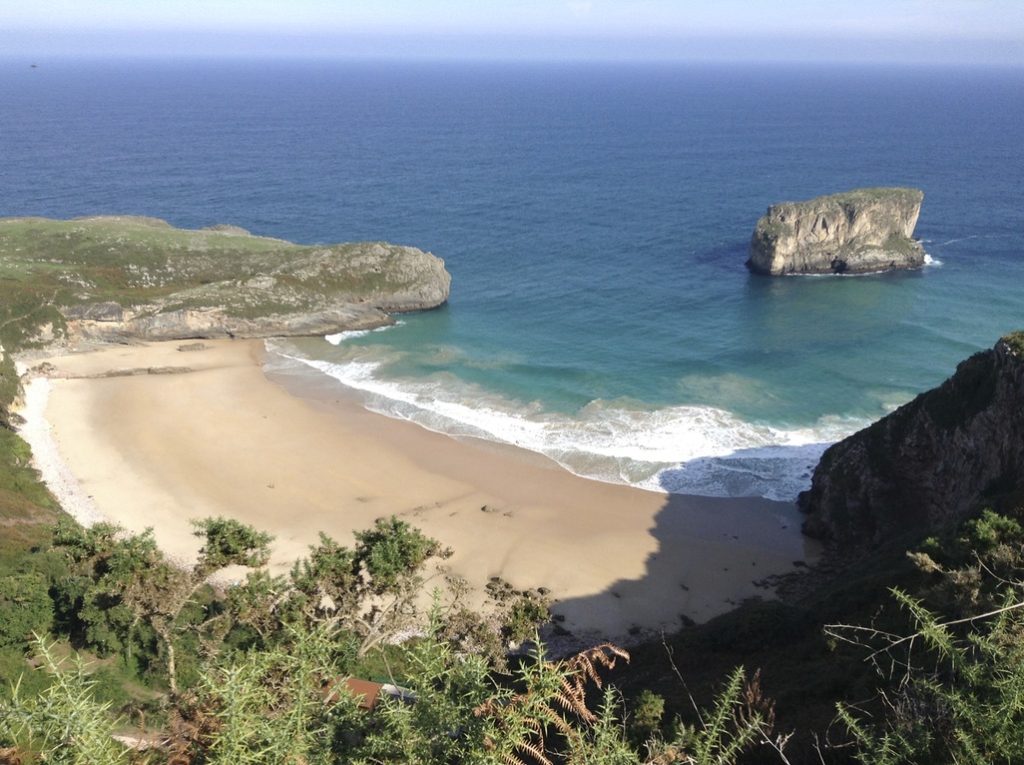
Caminos are to pilgrims what drinks are to alcoholics: one is too many, two isn’t enough, and three isn’t half enough. The Caminho Portuguese, after two instances of the Camino Francés, was like the difficult third child who had upstaged the first two better behaved ones. Were I to walk another, it might make things right with the world again. Now, I must state the walk in Portugal was not that bad. A bad experience can result from sickness, injury, being abducted, robbed, getting gored by a bull, or simply not making it out alive. The Caminho Portuguese was, at worst, a demanding experience for the first twelve days, but the latter part of the journey, from Porto to Santiago, brought me many friends with whom I shared much good cheer, although we only had about a week to get to know each other before we all went our separate ways again. However, in contrast, I had experienced miracles on the Camino Francés, and I was very tempted to go back again in the hope of finding another. However, the Francés, which initially had been a terrifying prospect for me, was now quite a routine experience. Wherever I was trying to go in life, and I still hadn’t figured that one out, I needed to follow new paths to get there.
The term ‘buen camino’ is the most common phrase uttered between fellow pilgrims. It simply means have a good journey, be that on the road to Santiago or the road of life. However, another phrase, ‘ultreia’, is sometimes used to give extra encouragement to your fellow traveller. As I finished the Francés for the second time, in 2013, I swapped contacted details with a young German man called Alex, who had walked all the way to Finisterre from his home on the banks of the Rhine, a trek of about 2000 km, and was not stopping at the end of the world either. He gave me his email address, and wrote the words, ‘Ultreia – go further’. It wasn’t just enough to walk from A to B and then go home. We had to carry the spirit and meaning of the camino with us into our regular lives. If the lessons we learned from our journey were sufficient, then perhaps we could return to a ‘normal’ existence. However, none of us would ever reach a point where we could stop. To become the best, or at least better, versions of ourselves we always had to keep on going that extra mile.
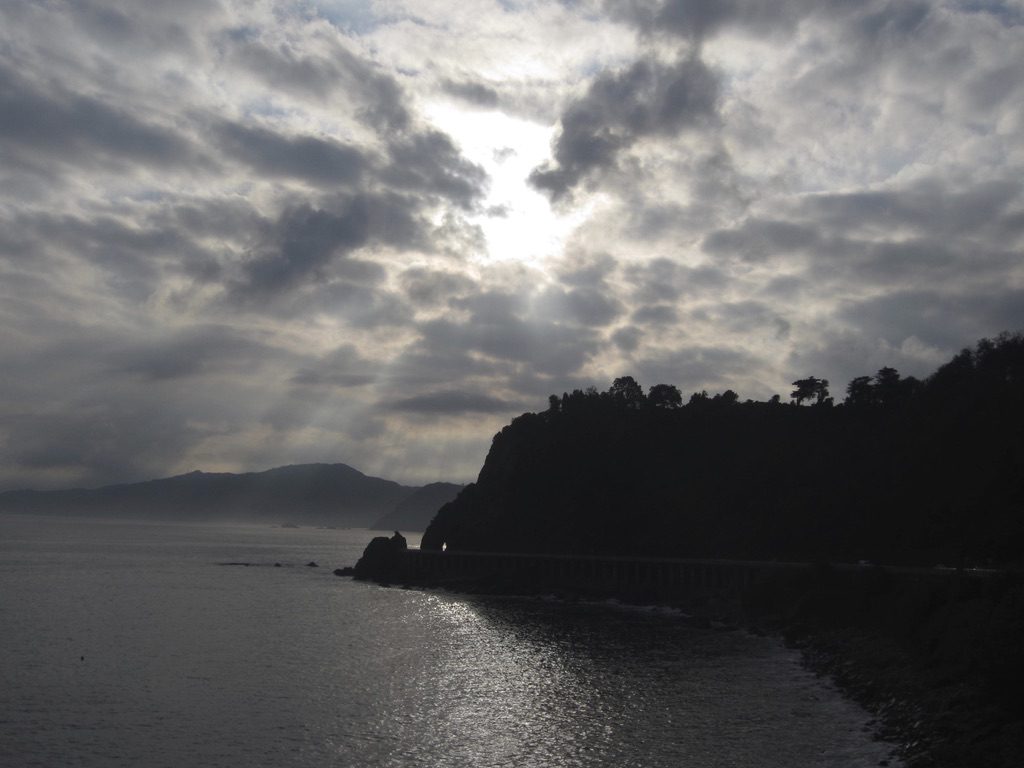
I penciled in the Camino del Norte for September and October of 2016. This route began in Irun, a small border town on the Spanish side of the Pyrenees, continued along the northern Spanish coast through the Basque Country, Cantabria and Asturias, before arriving back in Galicia and the home of Saint James. Historic towns and cities like San Sebastian, Guernica, Bilbao and Santander awaited. My research indicated this was a difficult walk, and anecdotes from those who had walked it suggested likewise. It was supposedly full of steep climbs and descents, with some very long stretches between lodgings, and it wound its way through parts of Spain that were not yet set up to adequately accommodate pilgrims. I was having flashbacks to my walk from Lisbon to Porto, and I started to get cold feet. I had booked my flight to Bilbao, and from there it was a short journey to Irun and the beginning of the Norte, but not much further to Roncesvalles either, where I could begin the Francés again if I so chose. I was being torn in two directions – return to the comfort, familiarity and collegiality of the Francés, or branching out into new territories on the Norte? My heart was telling me to do the Francés again, but my head was saying no. Ultreia! Go further.
I was scheduled to leave for Bilbao on a Thursday in September, 2016. With all my bags packed, I got a text from the airline to say the flight had been cancelled due to an air traffic controllers’ strike in France. Those lazy work-shy French, I thought. The airline were able to put me onto another flight forty eight hours later, so I just lost two days. Of course, even one day of a difference will result in a different Camino. I always remembered how my subsequent life would have been lived in a parallel universe if I had only stayed in Leon for one night instead of two in 2004 on my first Camino, or if I had left Barcelona a night earlier in 2013 on the way to my second. The sceptic in me has difficulty agreeing with the maxim that things happen for a reason. I don’t believe there is any overarching reason for anything. Stuff happens. We interpret it to suit our own needs and interests. But stuff did happen on those caminos, and it changed the path my life followed afterwards. The striking air traffic controllers had interrupted my plans for the fourth camino. I would never know what the alternative would have been. The Universe had split in two again, and I was in Bilbao two days later than planned. Where that would lead would all be worked out in time.
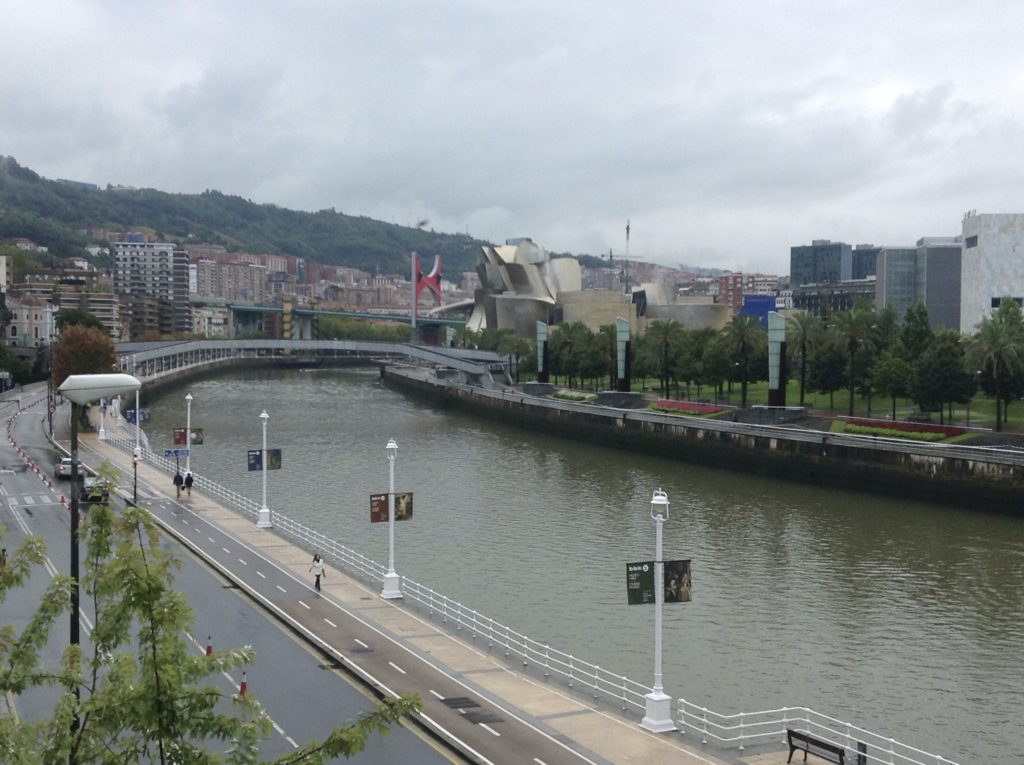
It was a cloudy day when I arrived. Temperatures were moderate, and while the sun shone intermittently the threat of a heavy shower was never too far away. The largest city in the Basque country was situated in a river valley, with towering mountain peaks surrounding it on all sides. I’d never been there before, but I immediately felt an affinity with the place. The temperate climate was in contrast to the sub Saharan heat surge that greeted me when I left the airport in Lisbon just 16 months earlier. This was weather I could walk in. I arrived at my hostel, where I was greeted by an Australian employee who said, “The weather’s a bit cold today, isn’t it, mate?” (I added the mate just to reinforce the stereotype). “It’s perfect.” I replied. The omens looked promising. This was going to be a good walk.
BRIEF ENCOUNTERS
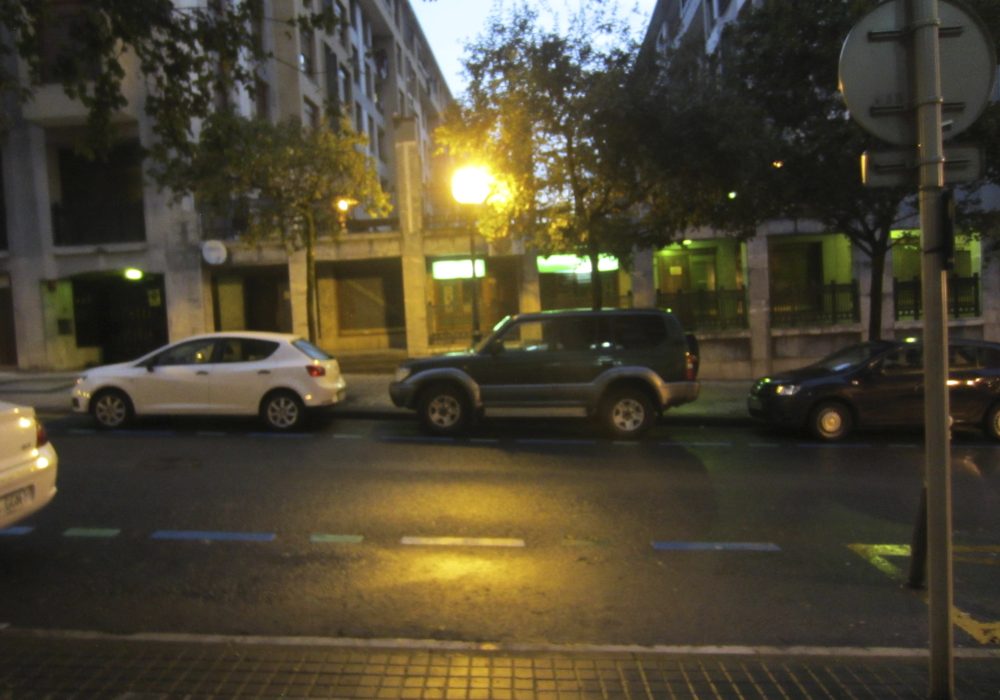
Irun is a small town on the Spanish side of the border with France, and largely nothing to email home about. This is the official starting point of the Camino del Norte. On disembarking the train I made my way to albergue by following the others who looked like they were pilgrims too. There is wisdom in crowds, and I don’t apologise for being a sheep when circumstances call for it. The albergue was located on the upper floor of an ordinary building on a regular street, just a few blocks from the train station. When I got there a crowd had already gathered, and we all lined up for the kindly hospitaleros to register us and issue our credentials. Unlike the warehouses that store the pilgrims starting the Francés, this place had a much cosier (read crowded) feel to it. The first person I met was a Korean man called Wibi, who had adopted the name Antonio for his European adventures. He had created his own menu peregrino which he cooked every night. It consisted of boiled sausages and boiled bulbs of garlic, which he generously shared with me. There would be no vampires in the albergue that night, that was for sure. And the garlic would certainly diminish prospects for romance as well.
Wibi Antonio was walking his third camino, this time to give thanks for his son becoming a master sommelier. I pondered the reasons for my walking another camino. I knew the question would arise, but I couldn’t quite think of what motivated me this time. I had laid many of my ghosts to rest on previous journeys, although ghosts being what they are they often return to haunt you. I had battled the do or die scenario that had led me to my second Francés in 2013, and opted to keep on going. That was probably the only choice I had. So when people asked me why was I walking this route, I would reply that I think I was walking it because I simply needed to keep moving. I was like the shark that had to swim constantly or it would die. Walking had become its own purpose now. It had become my reason for being. I didn’t know if I had a final destination now. It certainly wasn’t the city of Santiago, or Finisterre. It had never been either of those places. They were just stopping points on a much larger journey. But where was I going?
The earlier caminos had taught me that it was the journey which was important, not the destination. I started to realise that I was on a perpetual journey, and this was the latest step. And I could begin that in the morning, when a new day would bring plenty of opportunities to engage in philosophical indulgences. As anybody who has walked the camino knows, the most important thing each night is to get enough sleep, and that was what I would try to do before starting this odyssey. Of course, it’s not always as simple as that. My many solitary experiences on the Caminho Portuguese, where I was the only person in the albergue, had allowed me to forget what it was like to share a room with many other pilgrims. Here in Irun, several of them had decided to drink copiously in celebration of their new adventure before retiring to bed. That meant in the early hours, when I was trying to slumber, there was much evidence of uncoordinated movements, collisions with furniture, a few expressions of joy and mirth in languages I didn’t want to try and identify at that hour, followed by a chorus of snoring that passersby could mistake for a minor earthquake. This was the camino I knew – and loved.
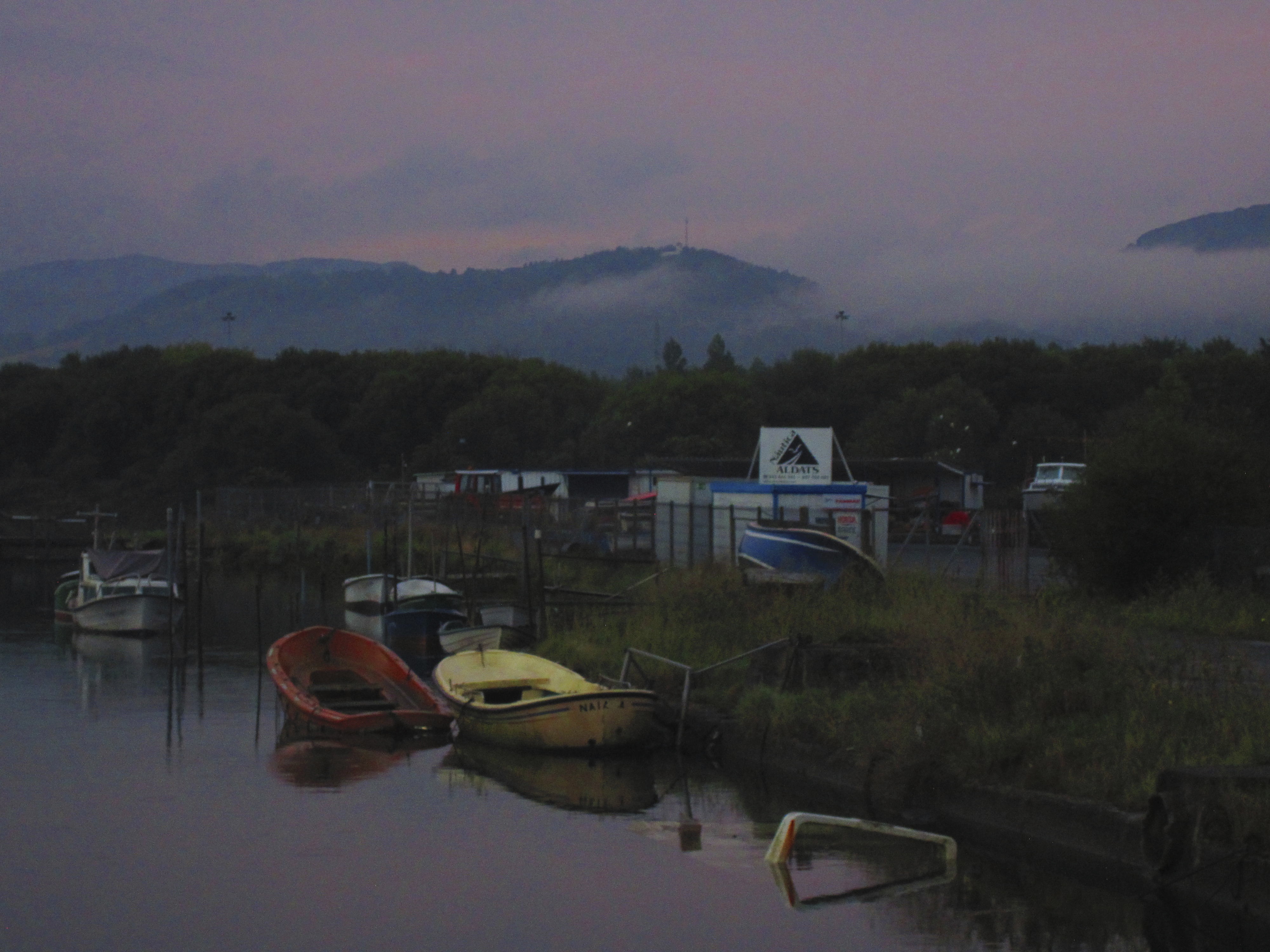
Wibi Antonio was my first acquaintance on this camino, and, like the first people I met on both renditions of the Francés, I never met him again after the first night. While I re-encountered the first group of pilgrims I’d met on the Portuguese on the second day, I never saw them again after that either. I thought it very odd that the same pattern repeated itself on each camino. What exactly was the Universe trying to communicate to me? I hope Wibi Antonio got to wherever he wanted to get, and his delightful concoction of boiled sausages and garlic gave him the sustenance to get there. He may never have been more than a few kilometres behind, but I would never know what happened to him. It was to be a camino of many such small encounters, where I made friends for a few days, but none of them completed the full journey with me.
ON THE ROAD AGAIN
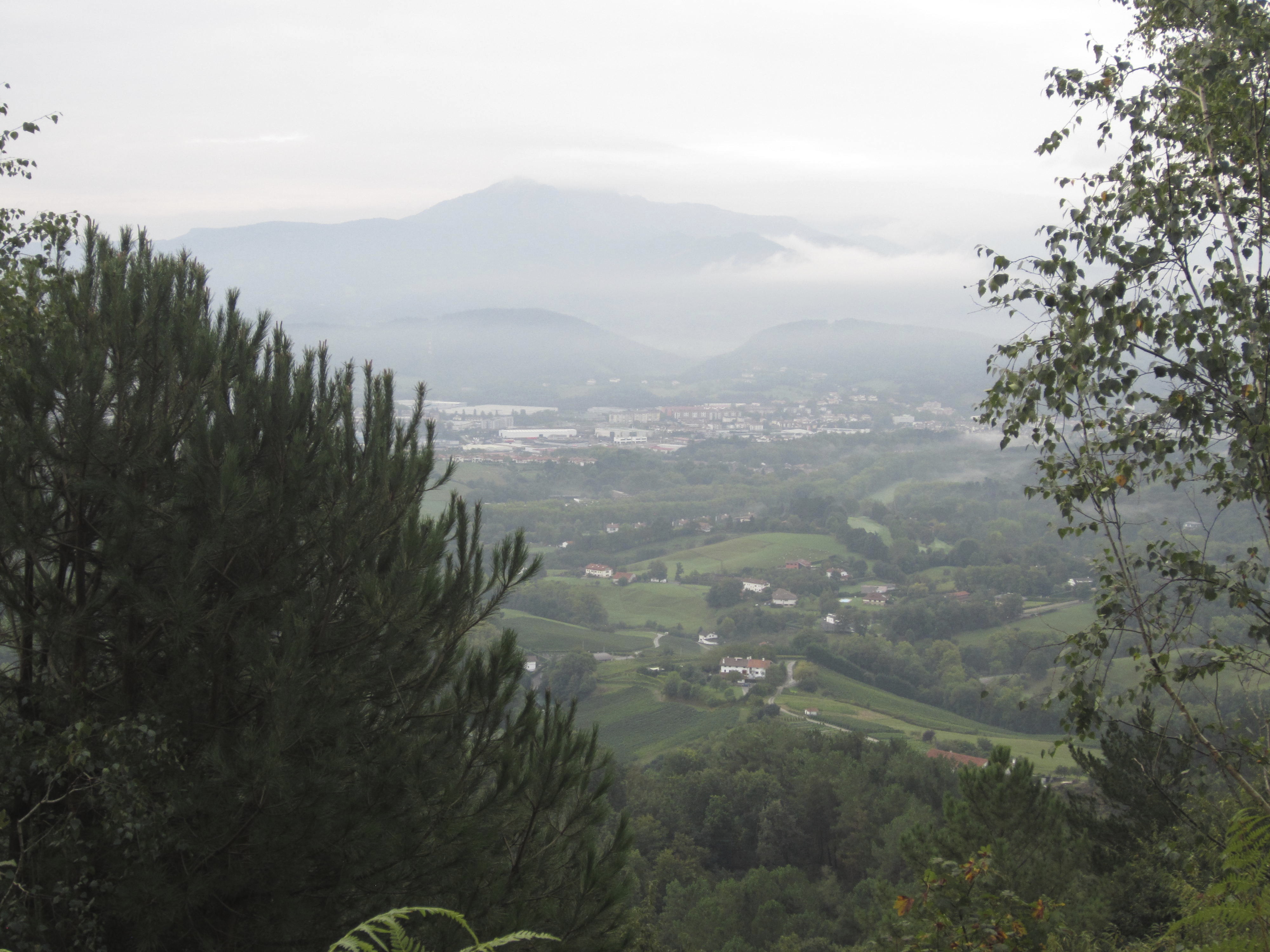
A good early jaunt saw me leave Irun behind within a matter of minutes upon leaving the albergue, and before I knew it I was hiking up a forested mountain trail. The climbing was tough but the scenery was magnificent, and when I reached the summit I was treated to a lengthy stroll which offered epic vistas of far away peaks, morning mist rising up from the fields and woods, and red roofed houses in villages that dotted the valleys far below. I ambled on along a carpet of fallen chestnuts, and the bucolic ambience of these moments convinced me that I had chosen the right path. Within a short time I was making a steep descent towards a small village where I had to take a short boat ride across an inlet. I was a bit conflicted about this, as it seemed to violate my camino rule against taking forms of mechanised transport, but there really wasn’t any other way to get across, and I didn’t fancy swimming with a backpack. So I took the boat. This may have compromised my Camino in the eyes of the almighty, but that was a worry for another time.
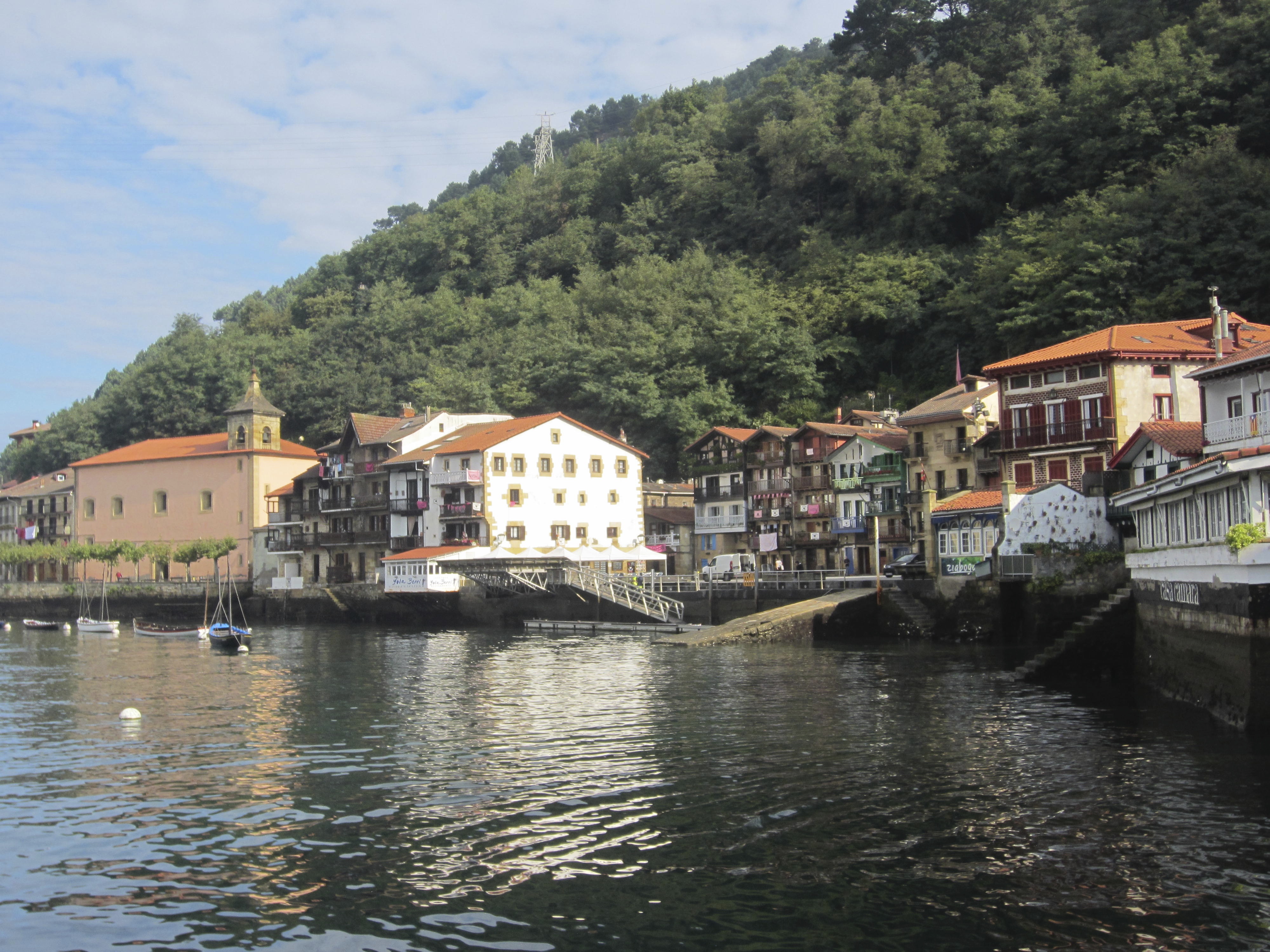
On reaching the other side I was faced with another steep climb, but I had the sea on my right, which acted as a source of energy. As an island dweller, who grew up by the coast, I love the sea. The presence of water was the one thing I missed when I walked the Francés. Now, it was glorious to be able to walk along the rich fertile northern shores of Spain, which were far more rugged, green and thankfully less commercially developed than their eastern or southern counterparts. After further ramblings through hilltop woodlands, where I paused to watch a pair of butterflies engage in a dance, or perhaps a fight, the route descended sharply and brought me straight to the beaches of San Sebastian.

The city of San Sebastian, or Donostia as it is known in Basque, is one of Spain’s most inviting. With a glut of Michelin star restaurants, it is the country’s food capital, and its shell shaped concha beach is one of the most attractive city beaches in the world. Though not a very well kept secret, it is certainly less known than the southern resort cities or the now overrun Barcelona. It was a perfect place to stop on my first night. I’d been in the town the day before, as it was the place to get the train to Irun. That day was showery and miserable, while on this day the sun was shining brightly. It was a whole different city, and the perfect stopping point after the most glorious day’s walking. The albergue filled up with pilgrims over the course of the afternoon. In the kitchen, as I was making an evening snack, I was joined by an older German lady. Though well into her seventies, she was making her annual journey to the camino. She poured herself a glass of wine, and a second for me.
“I don’t really drink,” I said.
Putting the glass firmly in front of me she replied, “You drink!”
I wasn’t going to argue with a German. We chatted for a while and she showed herself to be quite a character. Her main motivations for coming back to this walk each year was to get away from her husband for a few weeks. Several weeks later I met an Italian man who was doing the camino to get away from his wife. The Norte seemed to be the place to escape spouses. Or perhaps it was place people went to save marriages. The break might be just what the relationships needed.

The following night, about 20 kilometres west, was the equally delightful town of Zarautz, known for being the surfing capital of Spain. The route between the two points again featured long stretches by the deep blue sea, with some moderately challenging climbs and descents, but the rich scenery, which regularly changed from coastal to mountainous to pastoral, with idyllic little settlements mixed in between, made the walking all the more worthwhile. Zarautz was home to long stretches of golden sandy beaches, where the white horses from the Bay of Biscay rolled onto the northern shores. The sun had shone all day, but the temperatures were always pleasing. Just two days in and I concluded that the Norte was the crown jewel of all the caminos. Spain’s northern shores were not as well developed as their southern counterparts, and that made the walking all the more divine.

By the third night we were in the small seaside town Deba, where the albergue was housed in an old station house. An atmosphere of collegiality began to develop that evening, where a train of pilgrims who I had brief encounters with in the preceding two days all took up lodgings in the same place. We started to engage in the usual chat, with the same degree of curiosity and inquisitiveness that characterises all first meetings. There was something different about this group of people and those I encountered on the Francés. Firstly, there were a lot more Spanish people, and, as my Spanish is still fairly basic, opportunities for conversation were a little more limited. There were many Germans too, but not quite as many nationalities as earlier caminos. If this was the Frances, people would be wondering where were the Canadians, as our North American colleagues seemed to be underrepresented here. I was not the only Irish person. There was also a woman called Christina from Northern Ireland on this route. She was almost into double figures with caminos, and was a good source of information about what was coming down the road. It always helps to have an experienced navigator on these roads. The element of surprise is one of the joys of the camino, but surprises can be nasty as well as nice, so it’s good to be able to lean on the wisdom of those who have walked this path to know where not to go or stay.
PARALLEL LIVES
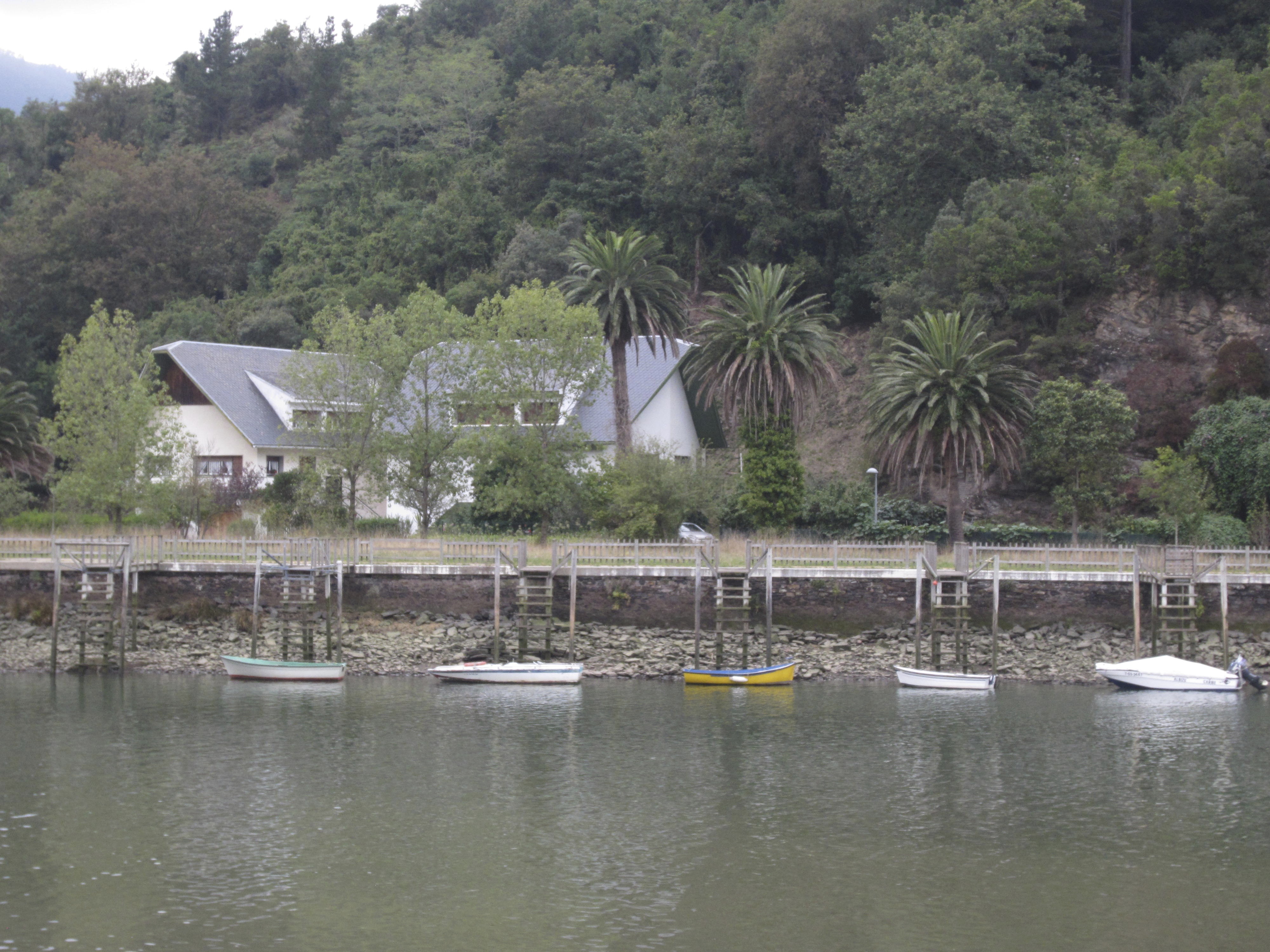
On the road out of Deba the next morning I met an Italian woman called Ana, who spoke perfect English, and we had a few words. She was probably in her early 30s, and was doing here second camino, having gone on the Francés in search of answers at an earlier point. Most of those I met on the Norte were veterans of at least one previous camino. This was a manageable walk for an experienced pilgrim, but for a novice it may have proven to be too demanding. Ana had a quiet air about her, almost withdrawn, and I could sense that she, like me, was one of those lost souls that had to go that bit further to find where she was supposed to be. In between caminos she had taken a sojourn to Southeast Asia, also a popular destination for those in need of direction. I too had ventured to India in the entr’acte since completing the Portuguese. Touted as a land of eastern mysticism, India is a place many people go to find themselves. Amidst the clamour, chaos, noise, traffic, shocking poverty, horrific amounts of rubbish, and brutal intense heat, I found myself alright. I found myself wanting to go home and return to the comfortable life I was privileged to have back in Ireland.

Visiting a country like India, where much of the population live in conditions that would have been prevalent in Ireland in the 1940s, enabled me to shed some more of the psychological baggage that I had been carrying for the previous few years. In the more economically advantaged areas of the world, where access to food and shelter are not as pressing an issue for most people (although it is still a pressing issue for some), we are overwhelmed with epidemics of mental health, depression and anxiety, where we constantly compare ourselves to others, feel in part inadequate and entitled, and frustrated when we fail to live up to our expectations of ourselves or those other people place on us. We turn to work, drink, drugs, pills, food, shopping and other panaceas to cure us of these existential ailments. We would do well to look at a country like India, where life for most people is so much more difficult and demanding than anything we have to deal with. And it’s not to diminish the anxieties that so many people from better off countries live with, which are very real, very debilitating and can drain away their soul and energy. But a walk through the slums of Mumbai can be very revealing indeed.

A walk in the woods in northern Spain provides a very different perspective. Like on earlier caminos, I was in good physical condition and I wanted to move as quickly as possible, because that had become both my rhythm and signature tune. Fast walking had become my therapy. It was my way of releasing anger and frustration and exorcising the demons I’d allowed to live inside me. As soon as I felt a red mist descend, I would increase my pace and tear off at considerable speed. I had grown so accustomed to walking quickly that I found slow walking was more difficult, even more tiring. I departed from Ana after a short conversation that morning. I sensed she wanted to be alone too, and we met again the following morning for another brief chat. That evening, in the town of Guernica, famous for being bombed by the Nazis during the Spanish Civil War and the suffering subsequently immortalised in Picasso’s eponymous painting, I went for dinner with Christina from Northern Ireland, and en route to find a restaurant we met Ana, who we invited to join us. The three of us sat down for a menu del peregrino in a place along one of the town’s main thoroughfares, and enjoyed the usual light conversation and simple dining. Christina departed for her accommodation after we finished, and Ana and I walked back to the albergue on the other side of town where we were both staying. When we got there we sat down in the foyer for a while, where the conversation switched back and forth from one topic to another, but it started to become a little deeper and more personal as it progressed, and I sensed we might be making some sort of connection.

The next day was a Sunday, and the group was heading towards Lezama, a nondescript village on the outskirts of Bilbao, about 22 kilometres away. Christina had stayed there before and said it wasn’t a very nice albergue, and to make matters worse it wasn’t due to open until 3pm. I saw Ana at the albergue in Guernica in the morning, and she seemed to be headed for Lezama. I wasn’t sure where I’d park my head for the night, but I bade her farewell, sure in the knowledge that our paths would cross again soon. I continued my journey through the Basque Country, concluding that it was easily one of the most beautiful parts of Spain. Almost alpine in its appearance, the region looked most unlike the stereotypical images of the country. That may have been one of its many reasons for wanting independence. Elections of some sort were due to be held soon, and many candidates were fighting on a platform of Basque separatism. Additional slogans scrawled on walls, and posters on notice boards firmly emphasised that this region did not want to be ruled by Madrid.
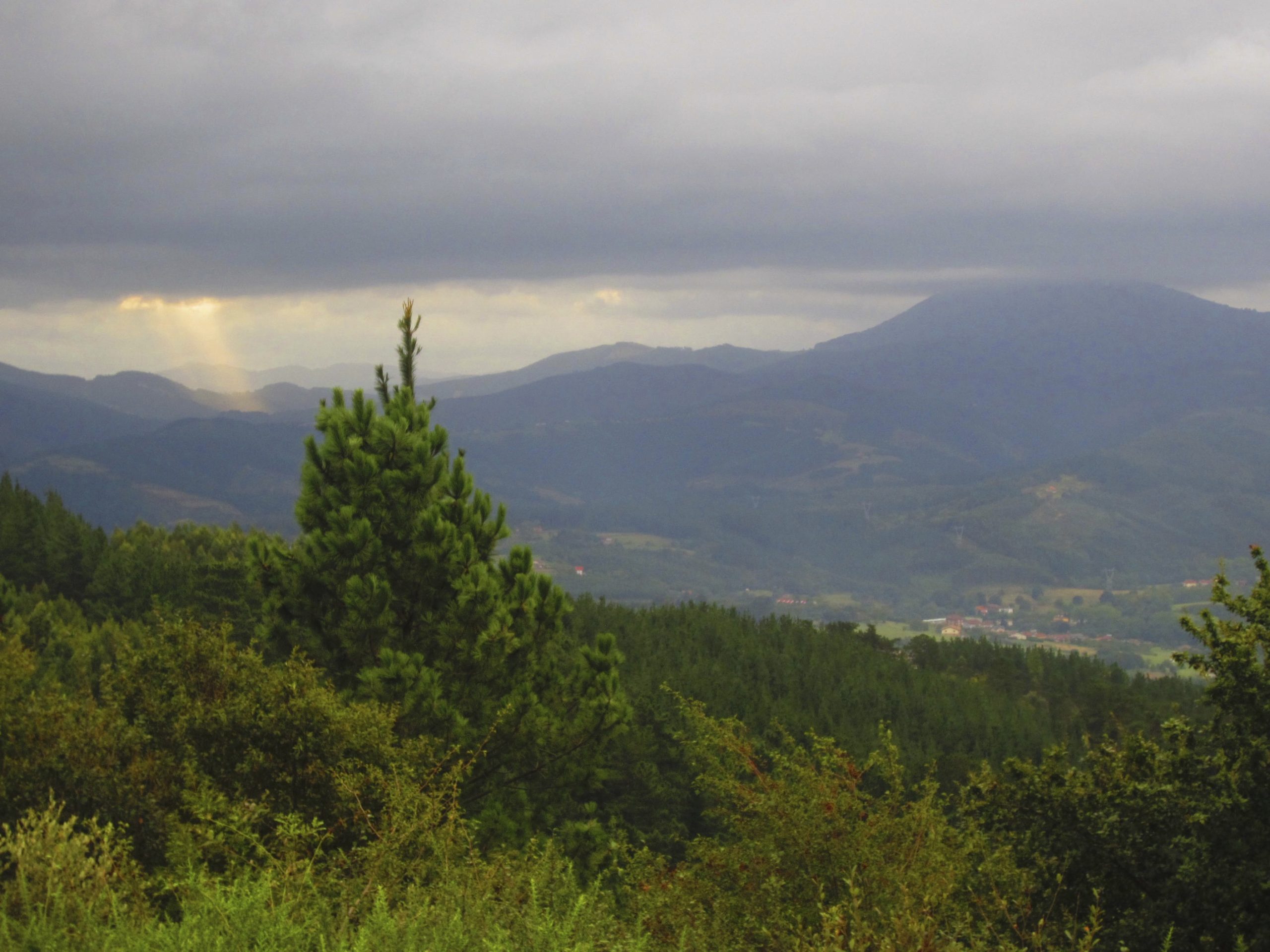
The walk from Guernica followed a similarly attractive path through forests and countryside, but as the day progressed the landscape became more suburban and commercial, as it does each time a big city approaches. Lezama was as unappealing as Christina suggested, and, as I still had plenty of gas left in the tank, I decided to motor on ahead to Bilbao, just another 10 or so kilometres away. In making that decision I had taken a fateful step. I was now moving ahead of the group, and may lose some of them in the process. But I felt it was my path to just keep moving, so that is what I did.
The approach to Bilbao veered off the main road, and back along hillside country lanes, which offered good views of the airport I had flown into eight days earlier. It was around lunchtime now, so I thought it would be a good time to stop and tuck into the provisions I was carrying in my backpack. It was a nice mild day. The weather had actually been glorious since the start of my walk, and I searched in the woods for a quiet spot where I could enjoy my lunch. I came to a secluded, narrow, wooded path, which was twisting up a hill, and I found a flat space where I could sit down and rest for a while. There was unlikely to be many other people passing this way at this hour. I had been sitting there for ten or fifteen minutes or so when I heard what sounded like the sound of a car engine. I guessed there must have been a road just out of sight, or a field nearby where a farmer was driving his tractor. Then I saw a car come around the corner and slowly make its way down the path where I was sitting. This path was so narrow, rugged and steep that it would be difficult for people to descend it, yet here was an actual car bumping over the rocks and the tree roots as if it was the most normal thing in the world (which it probably was to the driver). I had never seen anything quite so incongruous. I didn’t think I could have found a spot were I was less likely to be disturbed. The Universe may have been sending me a message: Perhaps I was in the wrong place at the wrong time.
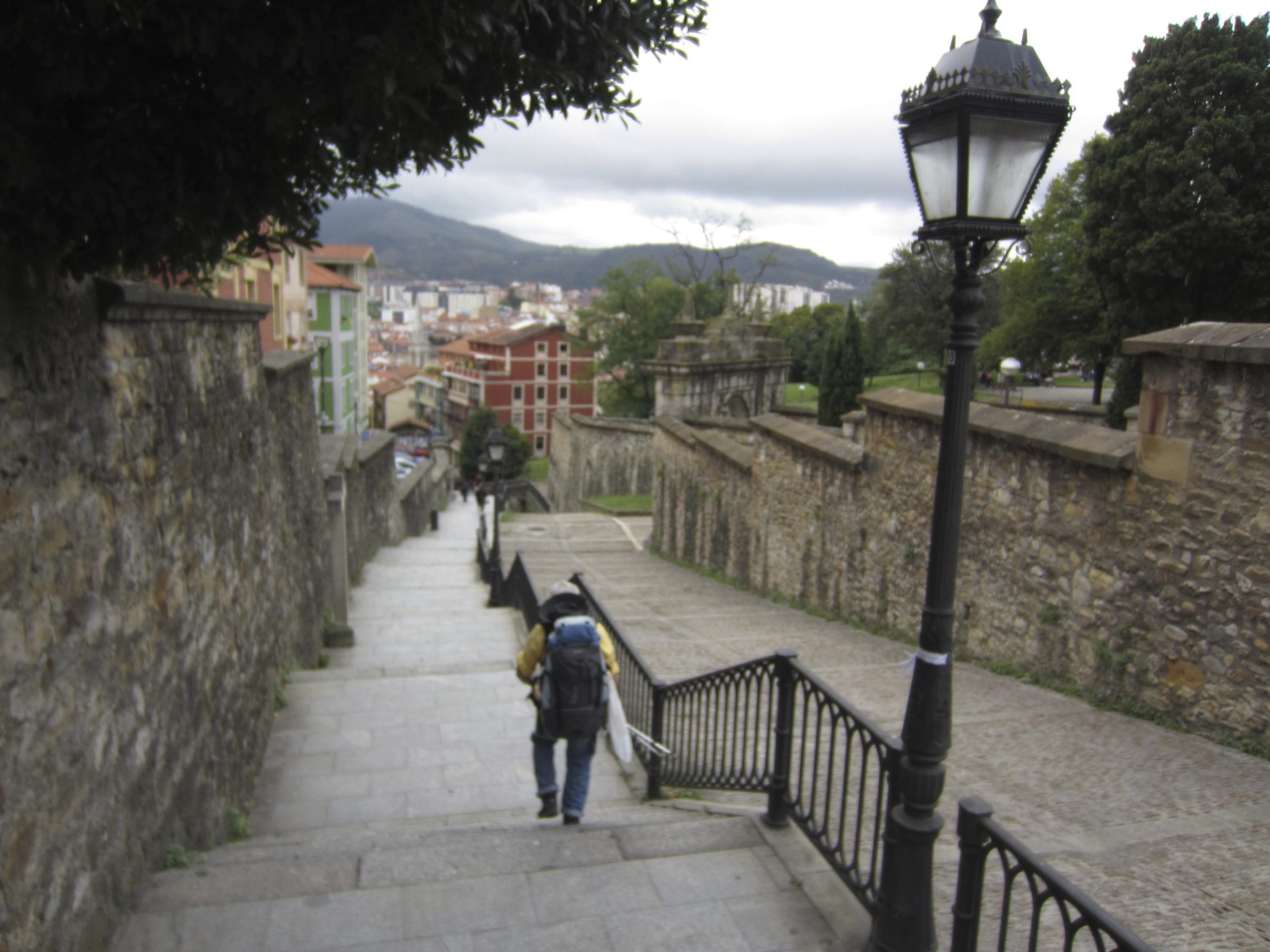
I reached Bilbao from the eastern side by the mid afternoon. The walk into the city was actually very pleasant. After the ‘car’ incident I rambled along quiet country roads, before a sharp descent brought me right down into the old town of Bilbao. I hadn’t seen any of this part of the city the previous week, so there was many new things to explore and enjoy. I had just ‘tasted’ Bilbao on my first weekend, but there was a lot more to savour. I walked around for a while, admiring churches, cathedrals and doing some window shopping in the attractive little boutiques, but then I got restless and wanted to find my lodgings for the night. My guidebook said the albergue was on the other side of the city, so I still had a fair bit of walking left to do, and I really wasn’t in the mood to do much more. I was enjoying the area I had arrived in, and would have liked to explore it in a little more detail, but I needed to press on. I hadn’t gone very far when I saw a luminous yellow shell symbol on a blue background, with the word ‘Albergue’ underneath. What a serendipitous blessing. They even provided dinner too. That’s where I stayed for the night, and I was joined in the albergue by a few others, some of whom I had spotted earlier along the way. However, none of my colleagues that I had started to get to know showed up that night, and many of them I never saw again after Guernica. Including Ana. I can only speculate on what might have happened had our caminos continued to overlap, but in my haste to make progress to Bilbao, rather than stay in the relatively unappealing surroundings of Lezama, I had allowed the Universe to split in two. I could never know if the path I didn’t follow would have made all the difference.
THE CANTABRIAN CONNECTION
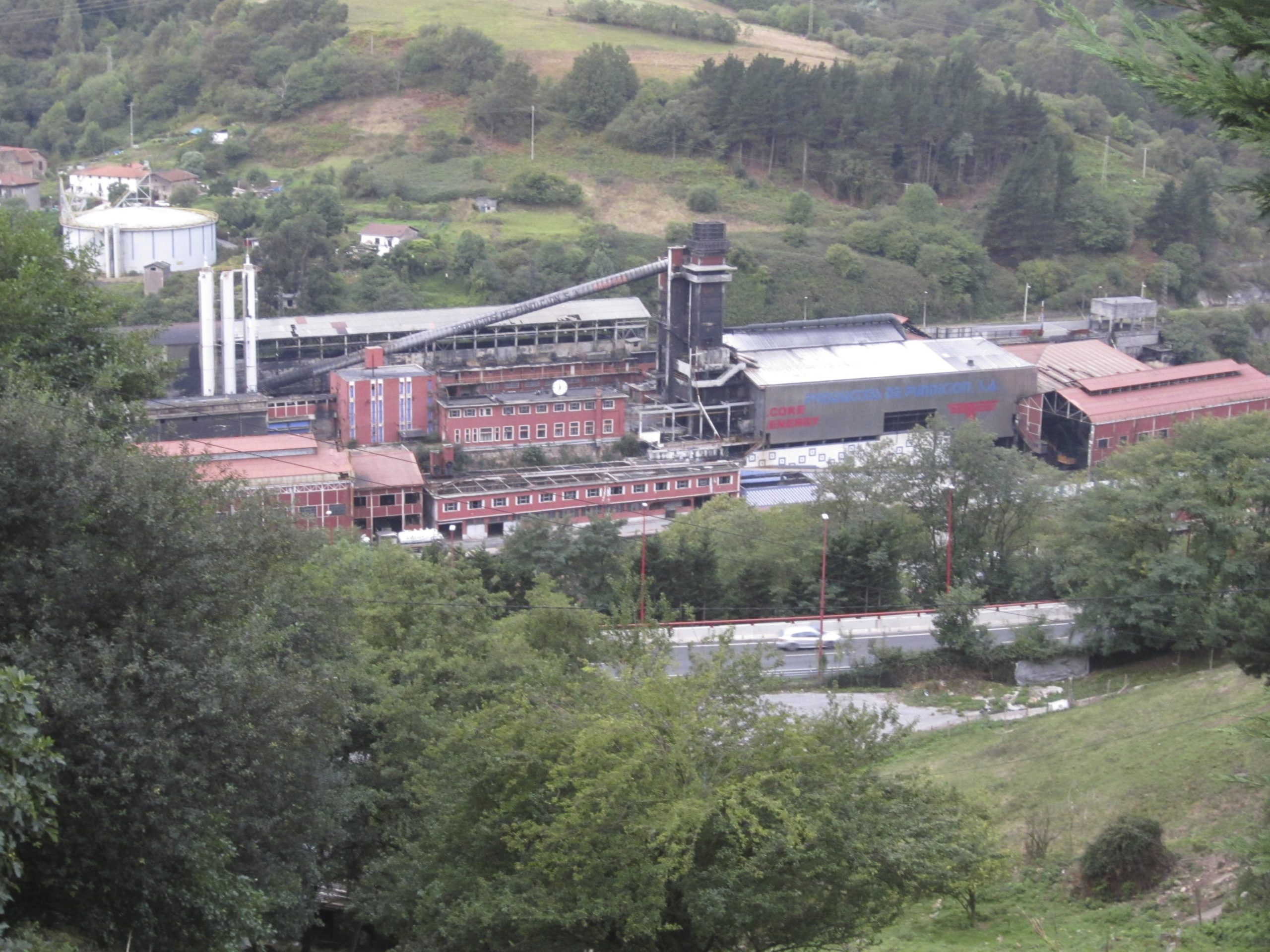
The next day was a Monday, and as with all Mondays it felt like a new beginning. The route I followed out of Bilbao was as confusing as it was misleading. At one point I was heading way off into the mountains as the city disappeared into the distance behind me, while an hour later I was back in the suburbs. I was feeling tired, and intended to stop in a place called Portugalete on the banks of the Ria del Nervion for the night, but for some reason I missed the turn and so I found myself on a long tarmac path along the side of a motorway heading to the small seaside village of Pobena. By the time I realised I’d made a mistake it was too later to head back, so rather than a pleasant walk by a riverside, I was enduring a hard slog through an industrial landscape. That said, I do take some perverse pleasure in walking past factories and plants. They are the internal organs of a community which keeps it alive. After a while I was back on the coast, enjoying the sounds and views of the sea by Spain’s Wild Atlantic Way.
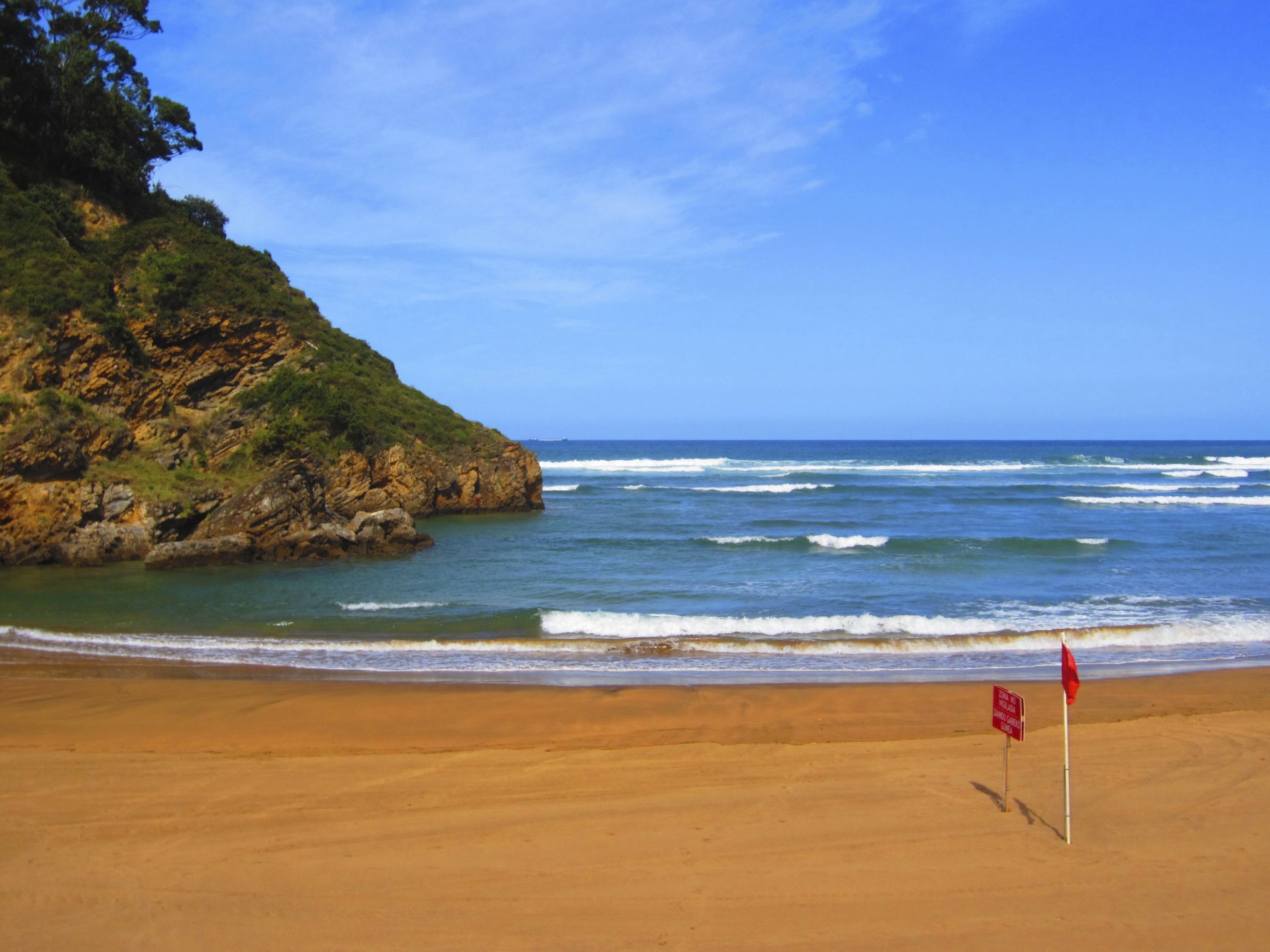
Pobena was the last stop in the Basque Country. From there I passed into Cantabria, where the landscape became more rocky and rugged, reminding me in parts of Ireland’s western regions. And for the first time on that camino the weather turned Irish that day as well. Thankfully, the rain didn’t last too long, and the next day blue skies and warm temperatures returned as the camino brought us along sandy beaches to a town called Laredo, where I spent the night in a convent run by Peruvian nuns. Laredo had a magnificent long beach, that swept around in a semi circle for several kilometres, although it was bordered by a series of apartments blacks that all looked ominously empty. Spain’s property collapse was in evidence all around the country, and here was a prime example of where the Spanish Dream had run aground.
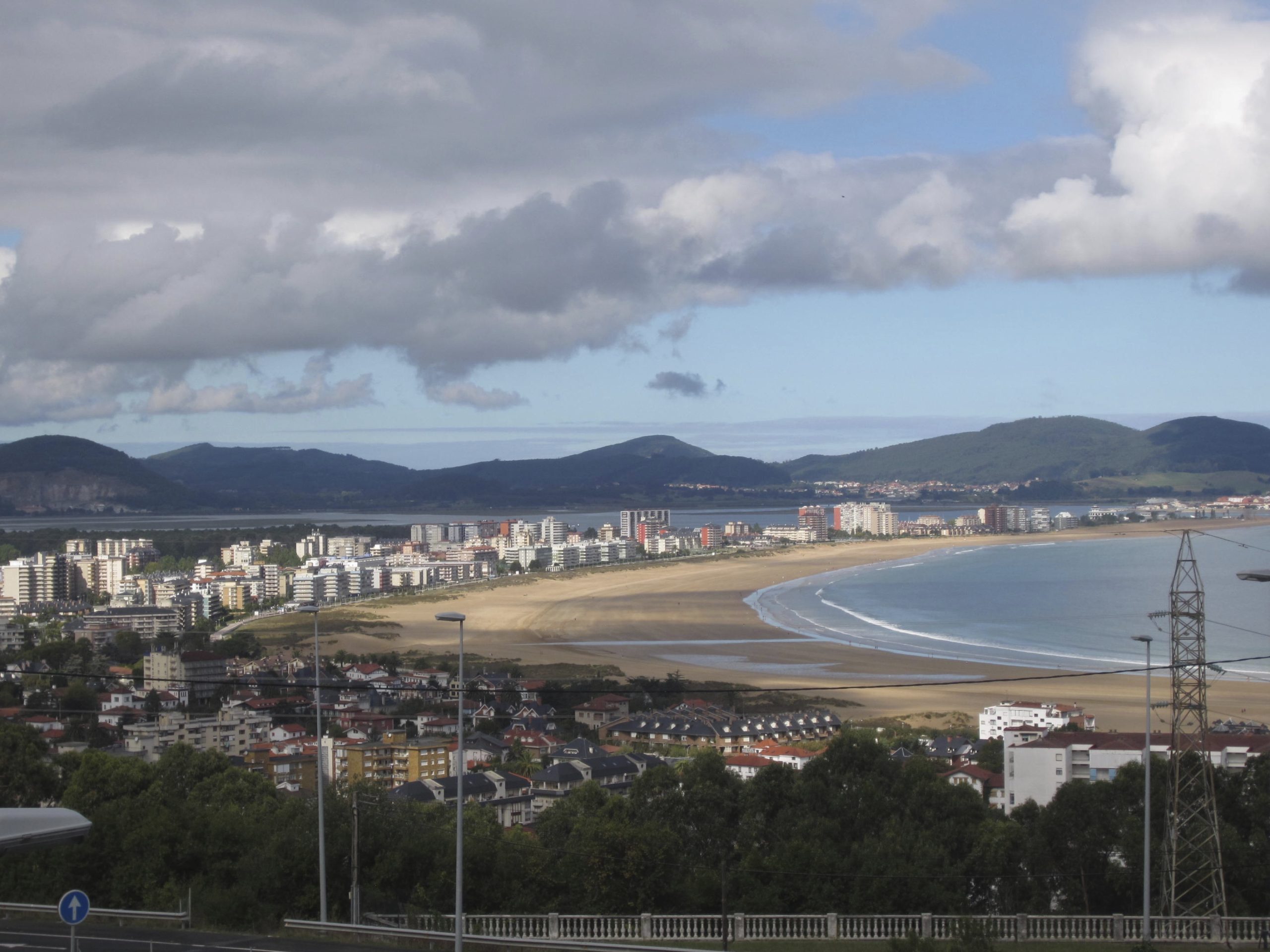
In Laredo I reencountered a very nice Polish couple, Kasia and Wojteck, who I first met a few days before. They had recently married and were walking the camino on their honeymoon. Also staying in that place was an older Spanish couple called Paco and Manuela. It was Paco’s fourth camino, and Manuela’s second. He was a widower, and had walked one of his first caminos to grieve over his late wife. Manuela also walked her first camino after she lost her husband. They both found each other along the way, and forged a new union. They were a wonderful pair. We passed each other regularly from there to Santiago, and while I spoke little Spanish and they little English we were able to communicate efficiently. On this camino I learned that not having a common language is really no barrier to communication. Another Spanish lady I regularly bumped into, whose name was Ines, was similarly short on English, but we both used whatever words we had from the other’s language and we got by. We often had dinner together and enjoyed a full conversation without either of us constructing a full sentence in the other’s language.
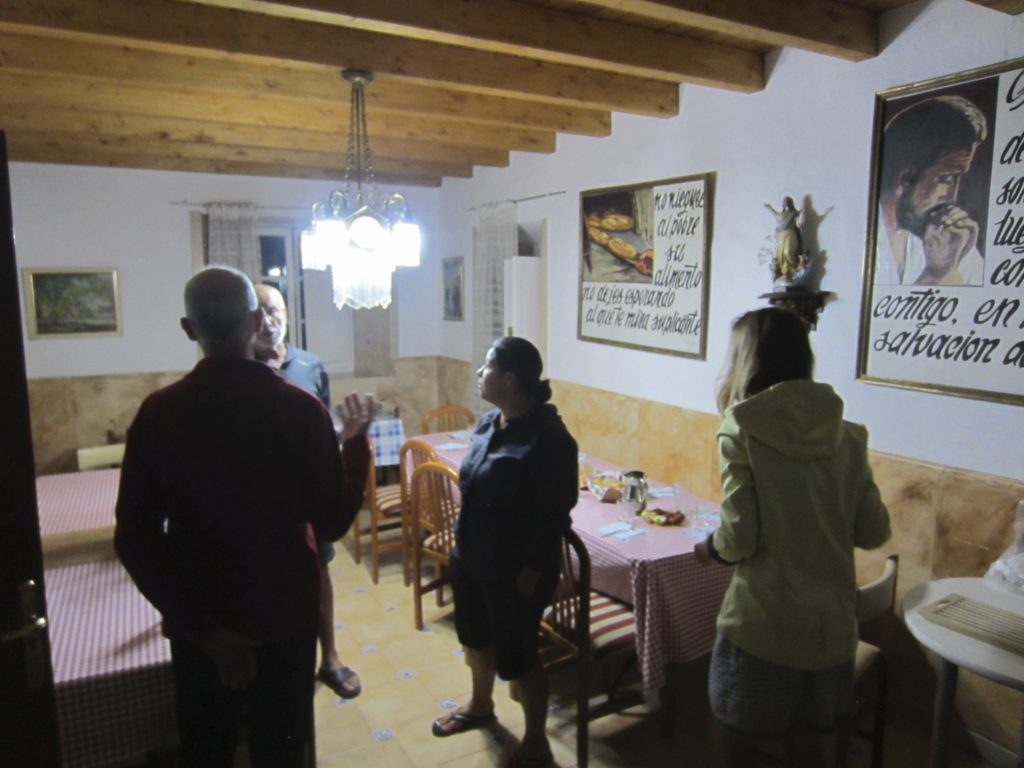
Guemes was the next stopping point after Laredo. It was a long stage that involved a short ferry crossing, ascending and descending a 200 metre cliff, and long pleasant strolls along the beach and through the autumnal Cantabrian countryside. There was an albergue here owned by Fr. Ernesto, a missionary priest who had established one of the most famous and hospitable refuges on the Norte. It was like Rick’s Cafe American in the classic film, ‘Casablanca’. Everybody came to Guemes. There were dozens of people here, most of whom I had never laid eyes on before, and never saw again afterwards. Ernesto’s hospitality was all it was made out to be, and he regaled us with the history of his albergue and his career in the church, which one of his colleagues translated into English. At one point he spoke about when he ministered to villagers in the nearby Picos de Europa, a big mountain range located across the Spanish regions of Cantabria, Asturias and Castilla y Leon, which we would be passing in the days ahead. He talked about how the people in his village were illiterate when he worked there 50 years before. That sounded like the dark and distant past, but when I worked it out it was only as recently as the 1960s. So much of Europe has undergone radical change in the last half century that it’s worth noting how far we have come in such a short period of time, even if we still have a long way to go.
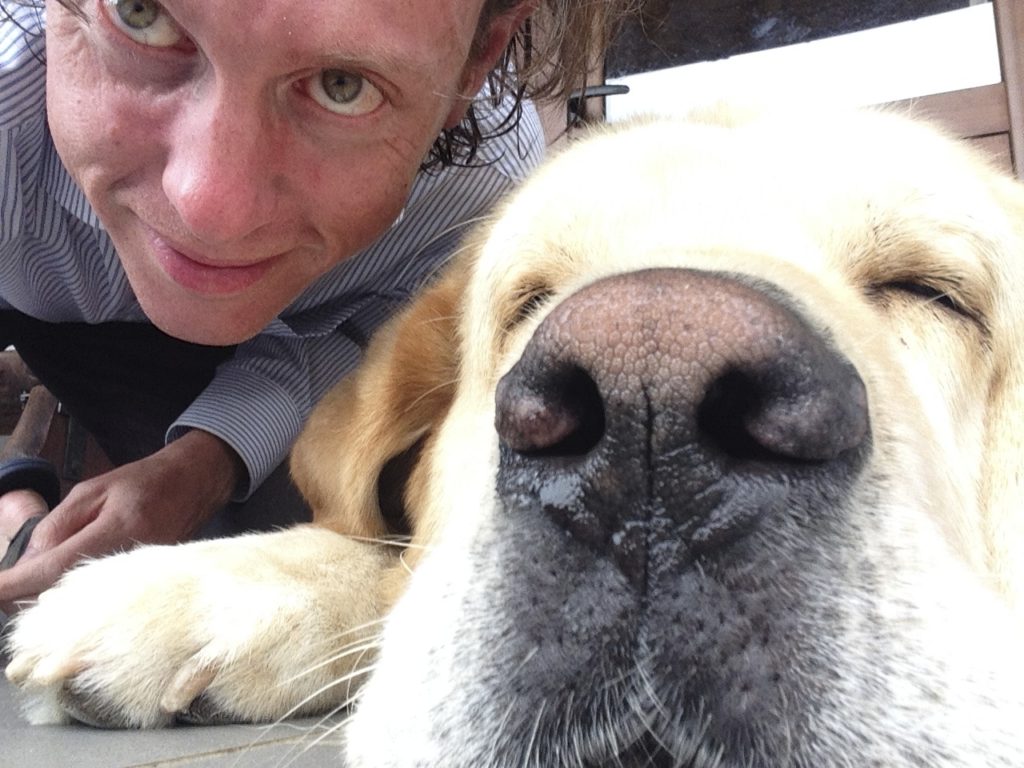
There was a very festive atmosphere in Guemes that evening, and for the pilgrims present it seemed like they had reached their first major milestone. We’d come about 200 kilometres, and we were on the cusp of reaching our next main city, Santander, where we would arrive the following day. Ernesto fed us well, and provided us with very commodious lodgings for the evening. I particularly liked the massive – and I mean massive – dog who lived on the premises. He was one of the biggest dogs that I had even seen, and quickly became a favourite among many of the pilgrims staying there. I learned, sadly, that this lovely old creature died not long after we had been there. The dogs of the camino are usually just very short term friends as we pass quickly by their homes or farmsteads. Many greet us, some bark at us, some beg for food, others want to follow us for a time (although there are warning signs posted along the way now to ensure pilgrims don’t let dogs follow them in case they get lost). Canine loving pilgrims will have many similar encounters each day with different hounds that they meet. Every once in a while we get to know a dog and their memory stays with us even if they were only in our company for a few minutes. That big dog in Guemes was one such creature. I hope he’s resting peacefully in the great Camino in the sky, where heavenly pilgrims are looking after him well.
STAND BY ME
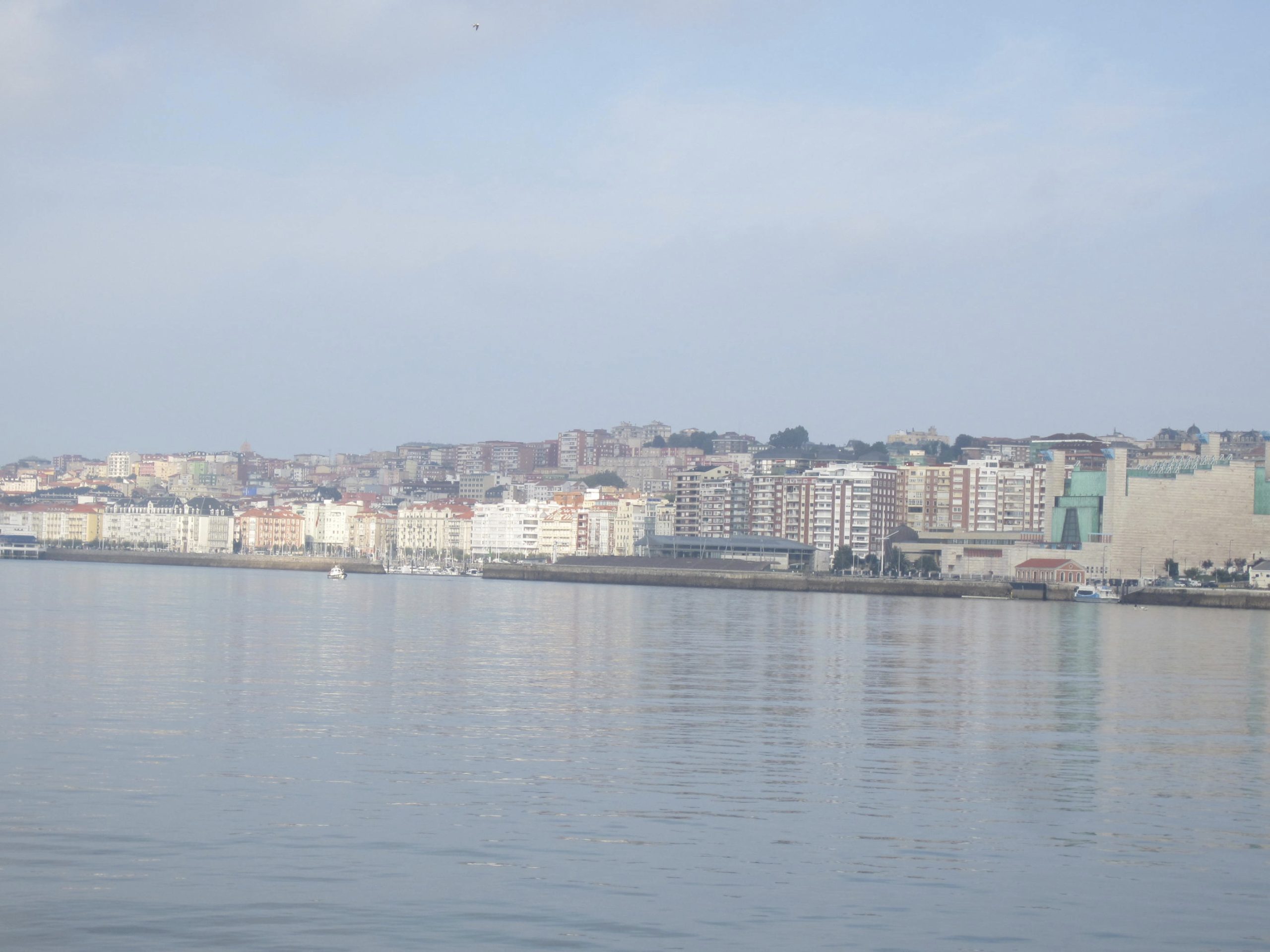
Santander is sometimes considered the poor cousin of the more stylish San Sebastian further along the coast. This would be a mistake. Santander is one of Spain’s hidden secrets, full of life and energy, a fine old cathedral, elegant promenades, some splendid beaches, a palace fit for a king (it used to be the summer royal residence), and some stunning pieces of architecture from the Belle Epoch era. For me, the name Santander will forever be associated with the shipwreck, the Ranga Santander, a Spanish boat under charter to an Icelandic shipping company, that ran aground off the southwest coast of Ireland in 1982. I used to love to look at the wreck anytime I went to county Kerry on holiday. The city after which it was named was a beautiful town, and I opted to spend the night there while many of my friends decided to move on. I rarely miss an opportunity to stay in a city, although I realise I could be missing some gems of small villages when I do. Santander is built on a long peninsula, and I had enough energy to walk the full length of the city to its northern peak as soon as I’d found a place to stay for the night. Its beaches weren’t quite as stately as San Sebastian’s, but its combination of eclectic architectural styles and sweeping seaside boulevards gave this city a unique charm it could proudly boast about.
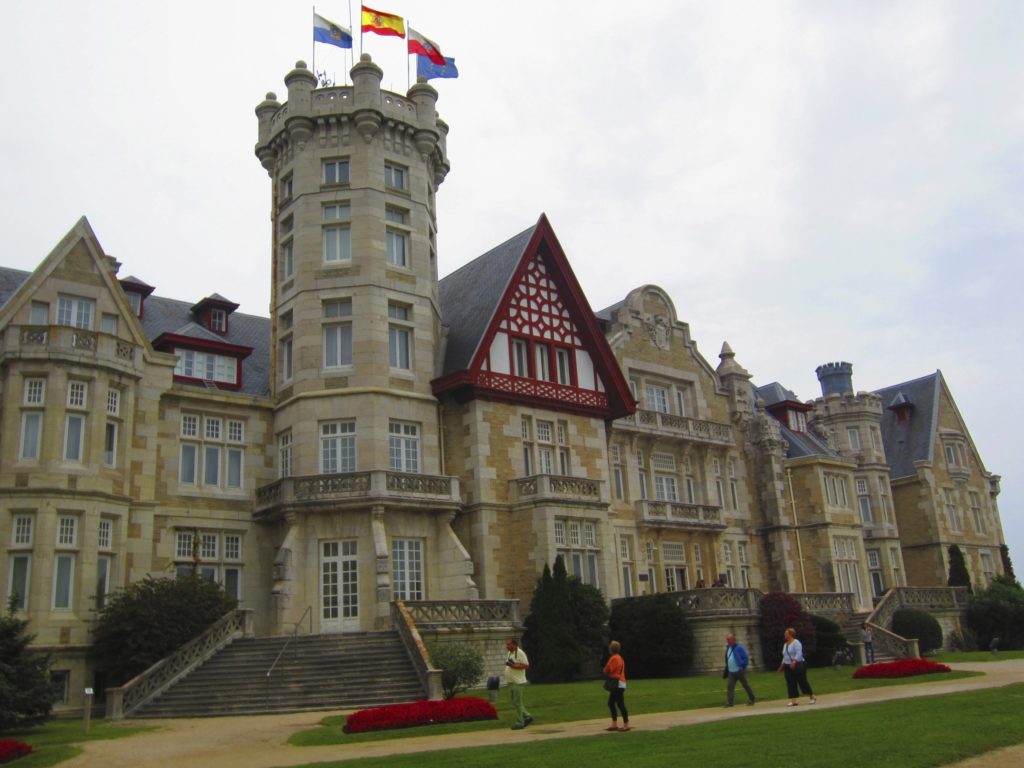
A trio of touristy towns followed from Santander: Santanilla del Mar, an attractively preserved medieval village that is more of a tourist trap these days, Comillas, a town that aristocrats from Barcelona made their summer retreat in the 19th century, and Colombres, a small town famous for its Indianos architecture – a style pioneered by local merchants who had made their fortunes in the New World – but where you can’t get a meal before eight o clock. It was due to be an interesting few days.
The walking was pleasant and without difficulty for the most part, but on the route from Santander to Santillana del Mar I was faced with another dilemma that only a camino purist like myself would entertain. To reach this point I’d had to take three ferries, something that I was willing to do only because there wasn’t any viable alternative. However, on the road to Santillana the situation is a little more problematic. The route comes to a railway bridge across a river. The nearest pedestrian crossing is 6 kilometres south. It is normally recommended that people take the train one stop to cross the railway bridge, but to do that would be to transgress everything I believed the camino to be about, and would ultimately lead to a life of eternal damnation in the fires of Hell. The road was 9 km, but to walk across the railway bridge was just 1.5 km, although it was not recommended, and probably illegal to do so. My path that day was already due to be in excess of 30 km. I could not take the train. That was out of the question. An extra 7.5 km wasn’t advisable either as there was a threat of rain. That only left one option: to cross the railway line and hope that a ‘Stand By Me’ moment, where a train arrives while you’re on the bridge and you can’t get across to the other side before it catches you, doesn’t happen.
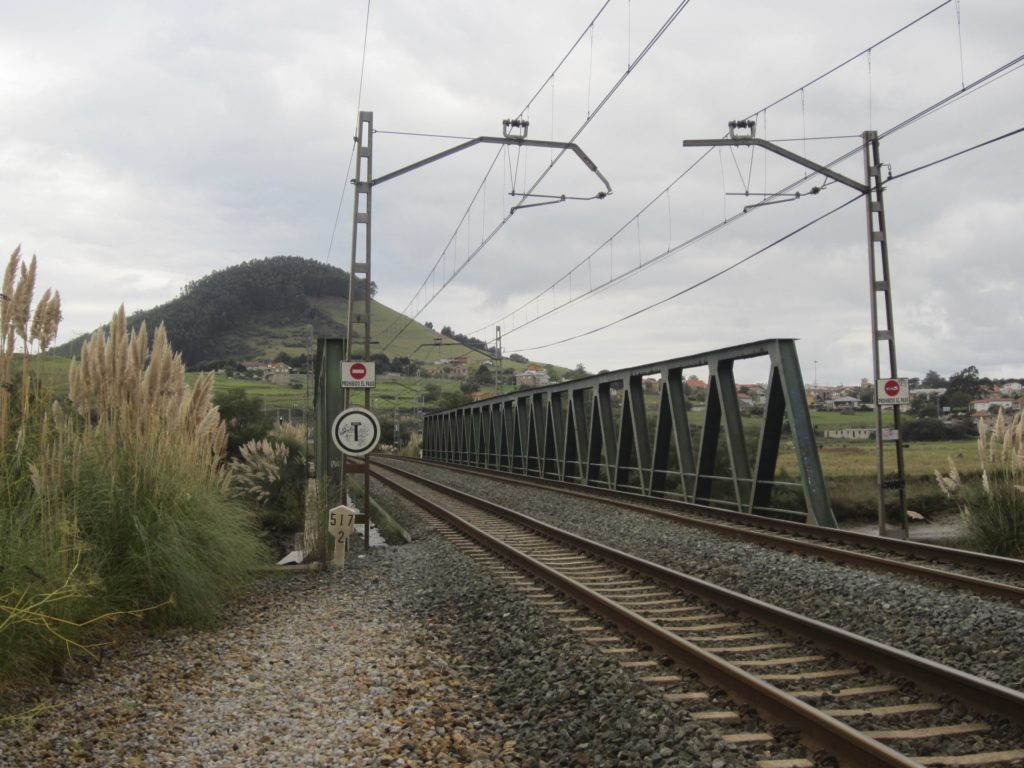
It was an overcast Saturday morning, here in the western rural fringes of Cantabria. I’d hardly encountered another soul since I left Santander, which was a city where no one stirred early on a weekend morning either. I hopped onto the tracks as soon as the road headed south. They looked well maintained, yet it felt like trains only passed through these parts once in a blue moon. The bridge up ahead was quite short in span, with huge iron barriers on either side to protect any train from veering off into the Ria de Mogro, just a short drop below. I trundled on, knowing I only had to negotiate the next hundred metres or so and I would be home and dry. I stepped onto the bridge and proceeded to cross, noticing that it was quite narrow and I’d be caught in a jam, or turned into jam, if a train should decide to cross at the same time. I had been walking next to or near tracks for quite a while now, and saw no sight or sound of a train. Of course, no sooner had I started to cross the bridge than I heard the sound of a train’s horn approaching fairly rapidly from behind me. Life just had to imitate art, didn’t it? The train travelled at sufficiently slow pace that I could move off the bridge safely without having to jump into the river, but I probably would have been prepared to do that. The Camino is a sacred journey after all, and one must be willing to make even the ultimate sacrifice to complete it properly under your own steam – apart from the three rides, which didn’t count.
IN THE KINGDOM OF ASTURIAS
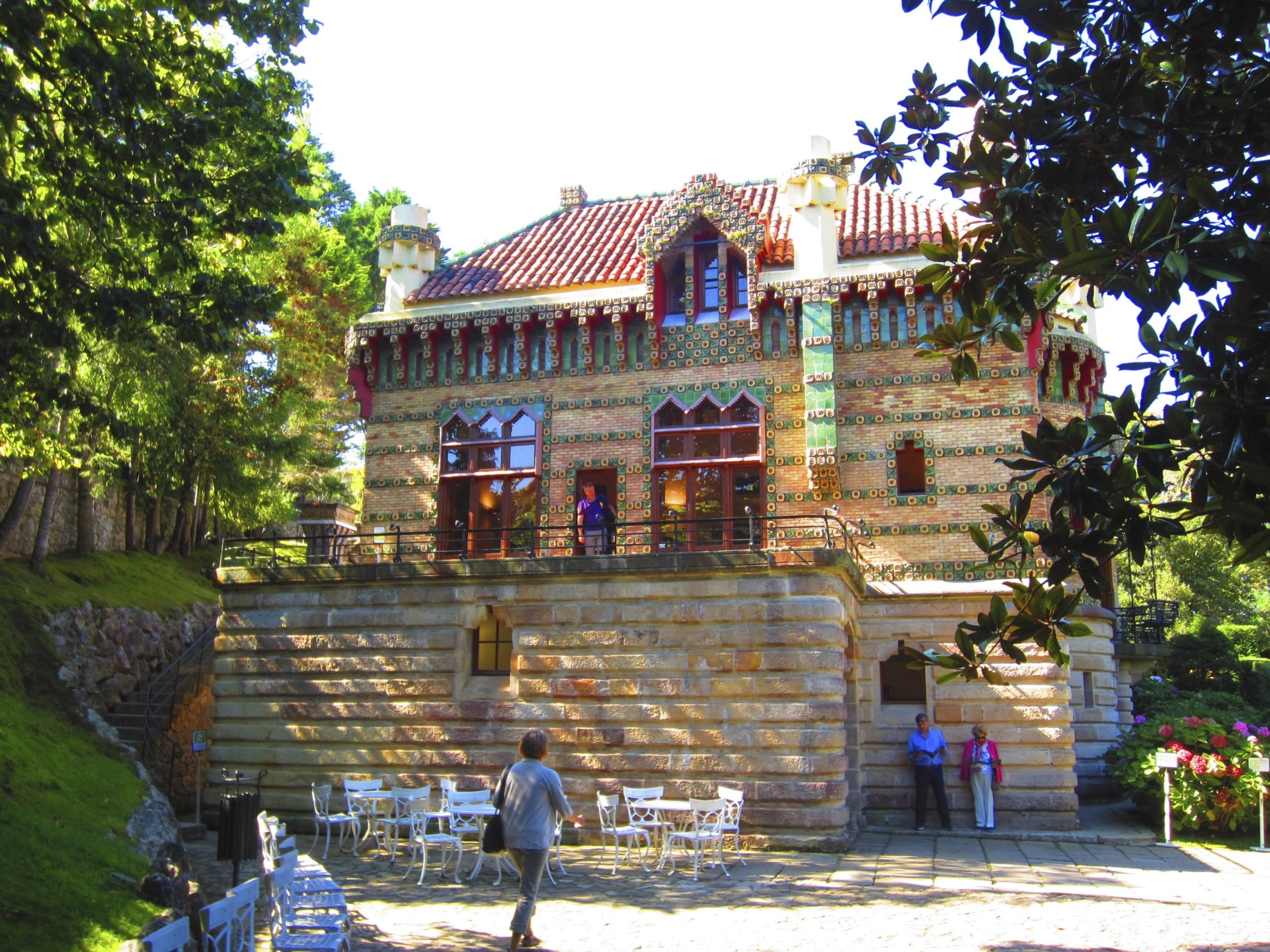
Santanilla de Mar was a kitschy version of a medieval Spanish town, with inflated prices to match its touristy status. It was pleasing to the eye, a little hard on the pocket, but it my feet that were suffering the most at this point of the journey. As much as the Camino is a journey of the spirit, it is equally a journey of the body, which takes about a million footsteps to complete. The Gods have usually been kind to my body on this road, but today I had to pay a small price with whopping blisters. Without getting into graphic detail, I was able to perform surgery on them and I was good to resume my journey to Comillas the following day. This whimsical town featured a fascinating display of modernist architecture, including an early work by Antonio Gaudi, before he transformed the cityscape of Barcelona with his transcendent imagination. I said goodbye to my Polish friends Kasia and Wojteck in Comillas, as they were due to finish their journey shortly afterwards. We would all meet up again the following year when they visited Ireland, and then I subsequently reciprocated by going to Poland, but this was the last portion we would share on this Camino.
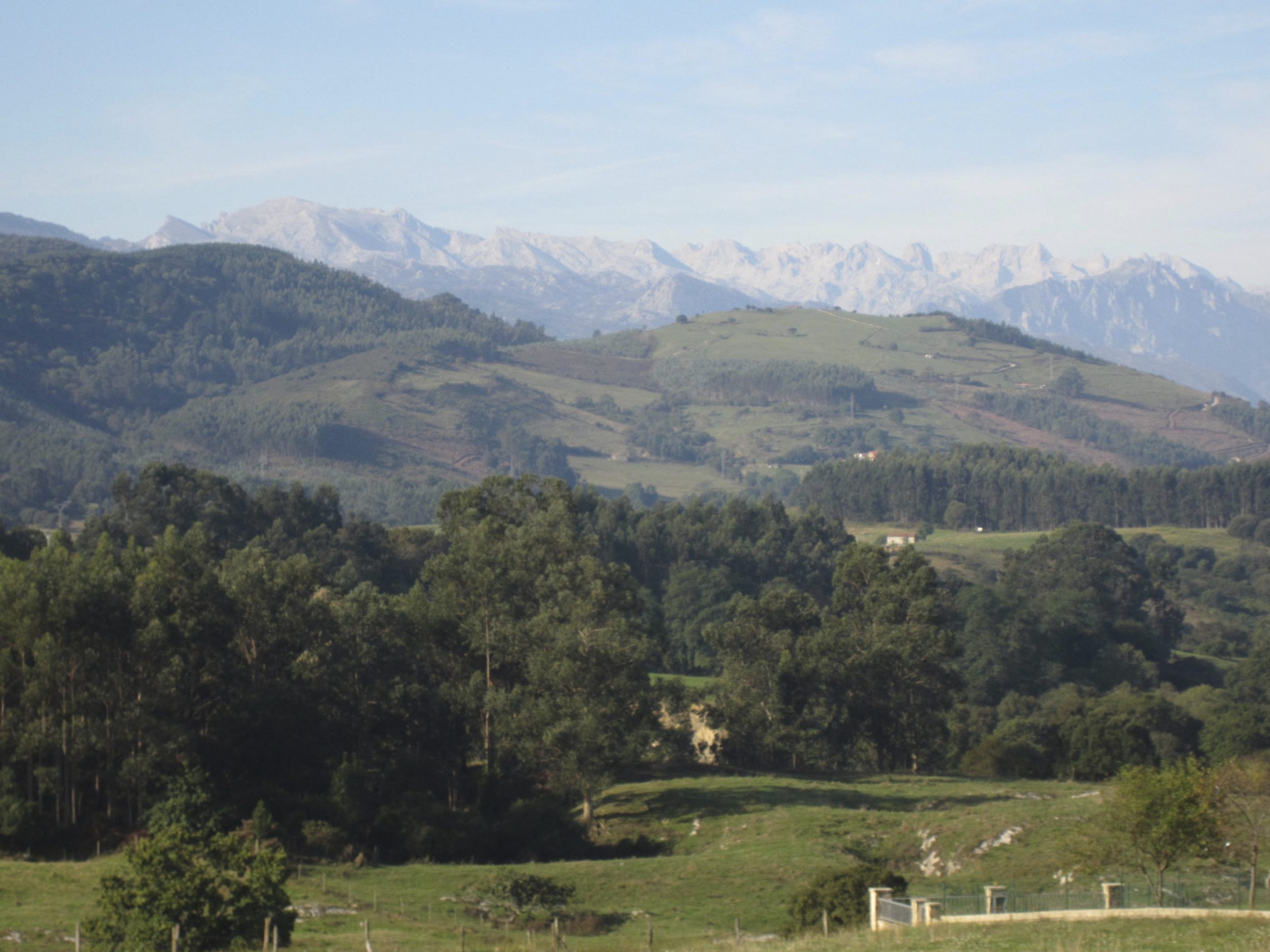
When I reached Colombres the next day, after 14 days of walking, I had passed into the region of Asturias, an ancient kingdom that would take about twelve days to cross. Asturias was one of the more inaccessible parts of Spain. Its capital, Oviedo, was a very welcoming city but not one that hoards of tourists were beating a path to get to. My first ingression into the province saw me walk from Colombres through the busy seaside town of Llanes, and on to the unfortunately named but very charming Playa de Poo, which boasted some of the most inviting coastal walks and beaches in all of Spain. En route I had enjoyed high clifftop strolls that looked down upon blue lagoons below. I stayed in an albergue a short walk from the beach, which had a quiet garden to the rear that was overseen by the towering Picos de Europa. Sheltered between the majesty of the mountains and the wild Atlantic ocean, this place was a little piece of heaven. It was among the most impressive walks a pilgrim could experience, with the following day’s promising an equally engaging trek by the sea, through the woods, past villages and old medieval monasteries, with the mountains keeping us company until we reached the scenic town of Ribadesella. The hospitalero told me about places to keep an eye out for, and added that pilgrims this year were particularly lucky with all the good weather we had enjoyed. October in the north of Spain, especially by the coast, was normally very salubrious, but this year the camino gods were giving us lots of pleasant sun. Could anything possibly dampen such a blissful walk?
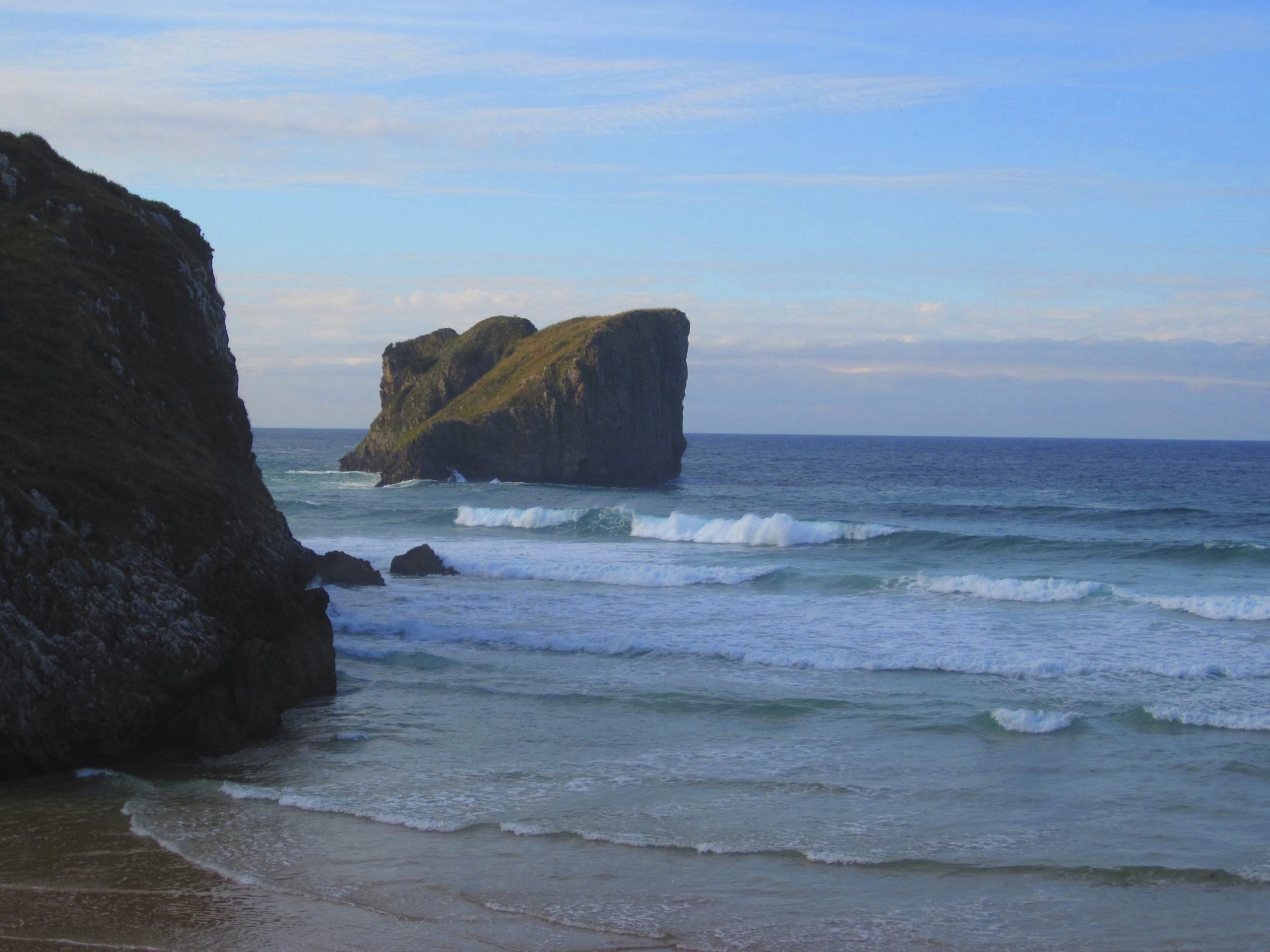
Yes. Rain. I had only experienced one day of rain so far, and that was more miserable rather than horrible. I expected (and kind of looked forward) to getting royally soaked when I got to Galicia, but before then I was as happy for the rain to head south from the coast and take up residence in the plain, if for no other reason than to keep Eliza Doolittle happy. However, sometimes things just seem too good to be true, and deep down you know that the Universe is going to have one big laugh at your expense just to keep it real. And so the next day it rained. It wasn’t the kind of rain I had witnessed on my worst days, the type of rain where every step is an effort, every movement is torturous, and you curse the moment your parents ever met. This was just dreary, muggy, humid, light annoying rain, which kills with a thousand cuts rather than one brutal blow. It reduced visibility to the back of my hand, edited out all the nice awe inspiring scenery I’d been promised, and turned what had been a glorious pilgrimage into walking’s equivalent of a root canal treatment with an inadequate dose of anaesthetic.
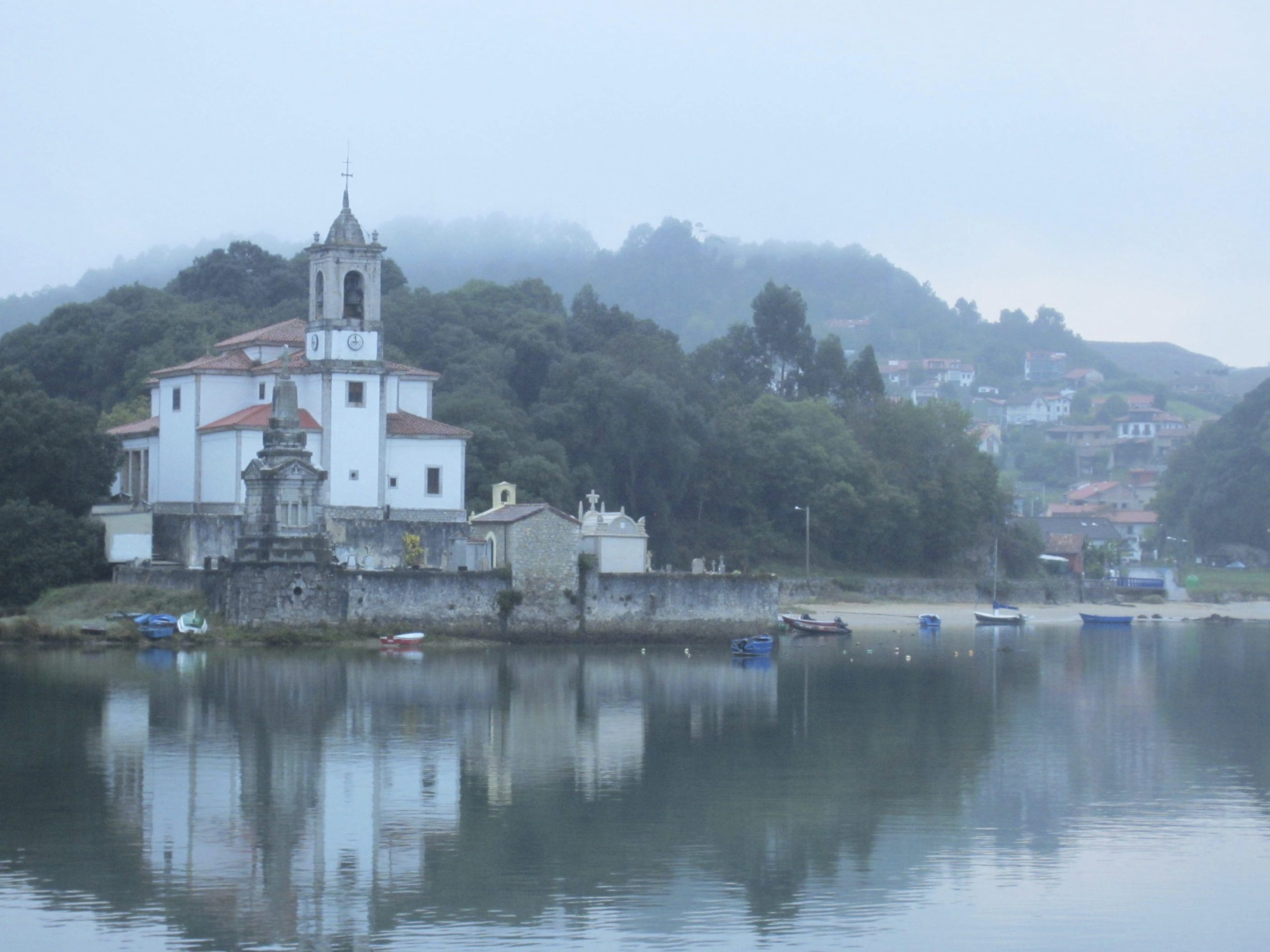
Rain clouded the horizons and also my judgment on that day, and Ribadesella, which would have been a delightful town on a dry day, looked grim and forbidding. It was a town that had a long history of suffering, having been conquered by the Romans thousands of years ago, and endured many other battles up until the days of the Spanish Civil War. I stayed in a hostel with a bird’s eye view of the popular surfers beach and promenade, but rain and the bad light robbed it of its lustre. I was tired by then, and I thought about taking a day of rest when I’d reach Oviedo a few days later. But a good siesta and a solid night’s sleep restored my energy levels, and buoyed me for the next day’s walk. I met a Hungarian lady at breakfast called Anita, who I had known for a few days. She said that you’re never going to get everything perfect all the time. You have to take the bad with the good. She was perfectly right in that, and everyday is a new opportunity to start over. I set off after breakfast under ominous looking clouds, and experienced a few sprinkles of water as I headed out of town but I grimaced and got on with it. What else could I do? However, the rain wasn’t to last, and the grimness of the early morning turned to golden sunshine within a few hours. I had notions of doing more than 37 kilometres to a town called Villaviciosa, where the Camino splits in two. One route continues along the coast, with the other heading in land through the mountains. That route was called the Primitivo, the first, and reputedly the most magnificent, of all the caminos. This was the route I was planning to take. Whether I’d get to the split point that day would depend on how I felt as I progressed, but I sensed that as I had formed the intention to go 37 KM my body would find the wherewithal to get there.
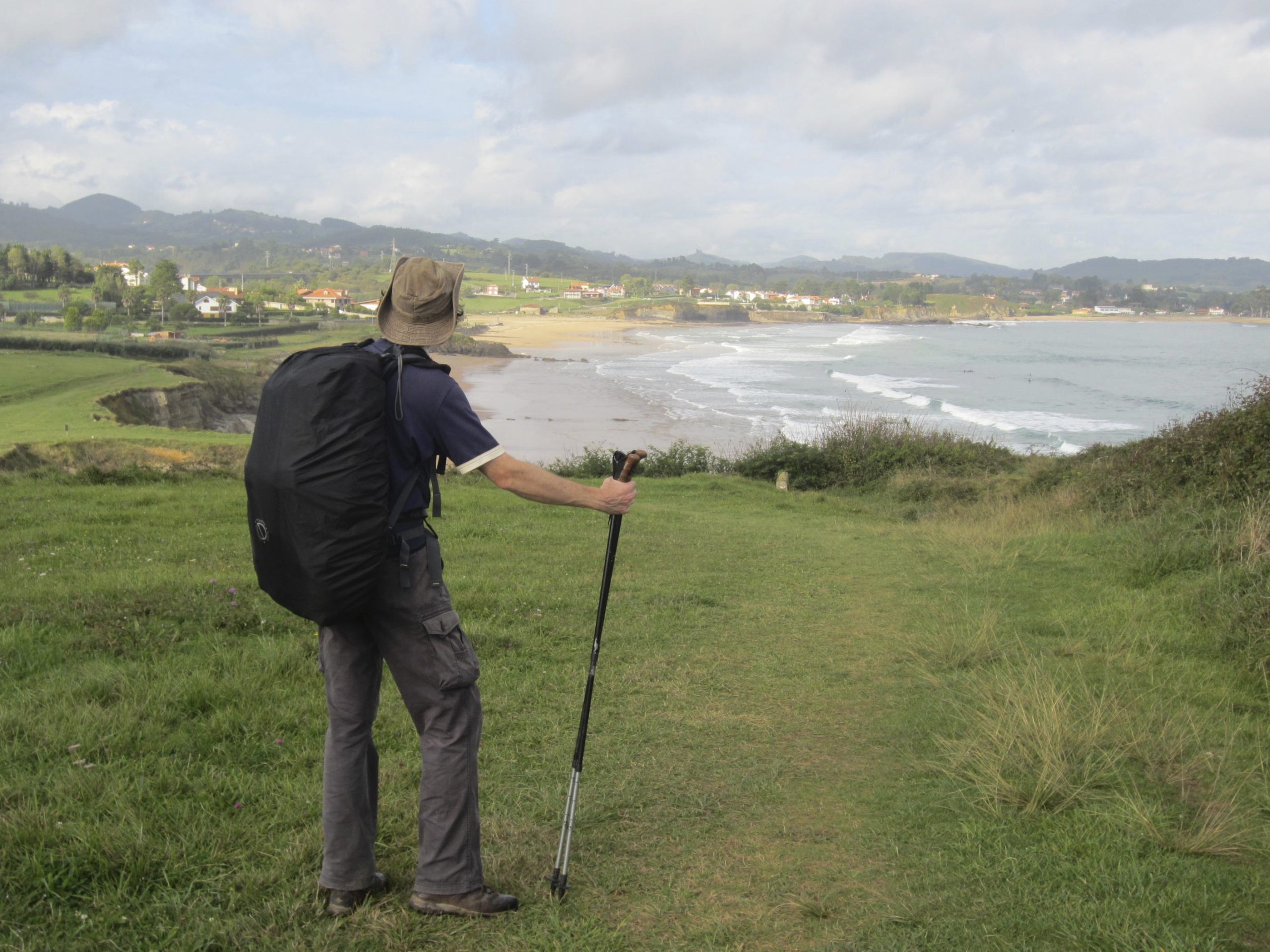
By noon I knew I’d be able to go the distance. I stopped in a town called Colunga to buy some food, and then I motored off into the countryside. Quiet rural roads wound their way through cornfields and green meadows, as they made their way inland. I would not see the coast again until I got to Muxia or Finisterre. From now on I would be a mountain pilgrim. I stopped for lunch in a tiny little square (more like a triangle) next to a church and a few houses and ate some bread, cheese, tomatoes, olives and whatever else I was carrying. I possibly rested there for about half an hour, but that’s how much time you’d need to stop and eat if you wanted enough energy to complete a walk of 37 kilometres. That’s only about 4 km shorter than a marathon, and, without sounding like a martyr, those runners don’t normally have to carry a 10 kg backpack either.
I slept soundly in Villaviciosa that night, a town who’s claim to fame is that it is the apple capital of Spain. As I left the albergue to begin the day’s journey, I put on my trusted backpack as I did every morning of the pilgrimage. I was about half way through my fourth camino, and I had carried the same backpack with the same amount of weight (and many of the same contents) on each journey. In the evenings, when my day’s journey was complete I’d often venture outside the albergue to explore the town or village I was staying in unencumbered by my mochilo (backpack). When I did it felt like a part of me was missing. With the absence of that extra 10 kg for ballast, I often sensed I’d fall over. The bag had become a part of me as much as the camino had become a part of me. I couldn’t see myself separate from either again. Just beyond Villaviciosa I arrived at the split and took the left road towards the mountains. A new adventure on the Camino Primitivo was about the begin.
That’s a great travel story, and beautifully written. Thank you. I’m planning on doing that Camino next when we can actually travel safely again from Oz. It has given me a very good insight.
I enjoyed your blog, hoping to walk the Norte next year. I did walk Frances this October. I have definitely not slain my demons…. Hence my interest in a harder walk..